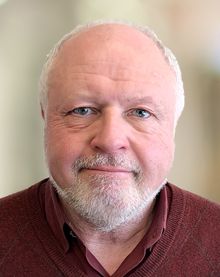Israelite Religion: From Tribal Beginnings to Scribal Legacy
Israelite Religion: From Tribal Beginnings to Scribal Legacy
Karel van der Toorn
New Haven, Conn.: Yale University Press, 2025. xv + 410 pp., hardcover, $40.
The Bible as seen by scholars and the Bible as seen by the public are two different things.
To see why, we can look into the index of this new book by a professor at the University of Amsterdam. It is a survey of the religion of ancient Israel from 1200 to 200 BC.
Popular belief, following the Bible, holds that Moses was a historical figure who led a group of Hebrew slaves out of Egypt c.1300 BC. But Israelite Religion portrays Moses as a shadowy, possibly mythic figure: the index has no listing for “Moses” per se but for “the Moses tradition.” Indeed van der Toorn says that the “exodus tradition” was unknown to many Israelites until comparatively late.
Van der Toorn begins his history of Israelite religion at the beginning of the Iron Age in Palestine (c.1200 BC). Before that, he indicates, little is known that is historically reliable. He argues that the Exodus from Egypt—a focal point of today’s Judaism—did not take place as the Bible says: “The careful analysis of the biblical sources shows that the exodus-and-conquest model was originally developed in the Northern Kingdom, as a national narrative to provide the different population groups with a putative common history.” (“The Northern Kingdom” refers to the two kingdoms in the Palestine of the early first millennium BC: Israel in the north, and Judah in the south.)
These details reflect the thrust of van der Toorn’s book. Instead of the coherent (if sometimes contradictory) biblical narrative of the patriarchs, bondage in Egypt, and liberation under the charismatic figure of Moses, he portrays Israel as a nation that came together around 1200 BC as a merger of different groups “that were ethnically mixed . . . They became Israelites, over the course of generations, in the Palestinian highlands” (emphasis van der Toorn’s). In such a context, the historical Moses becomes much more shadowy—and may have been fictional.
The Bible says that the Israelites were united by the worship of a desert deity called YHWH (pronounced, according to van der Toorn, as “Yaho”). But even this is mysterious. As he indicates, the very name “Israel” indicates that this nation originally worshipped the Canaanite god El, who was originally quite distinct from YHWH: the Israelites equated the two only later. The only thing known about YHWH is that he originated in Edom, as the earliest biblical references show. Presumably wandering shepherds from Edom and Midian (to the southeast of Palestine) brought their worship of YHWH with them into the Palestinian highlands, and other peoples joined them.
This reductionistic view presents its own difficulties. Van der Toorn describes the coalescence of a nation called Israel that came to worship Yahweh instead of El, although he does not explain how. This process is inexplicable unless we postulate a charismatic figure—like a Moses—who united these peoples in veneration of YHWH. It seems more likely that the Exodus narrative, including some of its main characters, is based on some core facts, even if they were heavily elaborated later.
These early Israelites were united only by allegiance to YHWH, which was not monotheistic in the sense understood today. The early Israelites did not necessarily deny the existence of other gods, as worshipped by neighboring peoples—only that YHWH was the god of Israel. Many Israelites also worshipped other Canaanite gods, and at least until the sixth century BC, there was a common belief that YHWH had a female consort, usually known as Asherah. The prophets’ relentless call that YHWH alone was to be revered shows the allure of these other gods.
In short, van der Toorn, like most mainstream scholars, depicts Israelite religion as the result of a long process of evolution and development. In its early forms it did not resemble today’s Judaism. Indeed van der Toorn argues that the term “Judaism” cannot even be applied to the religion of the Jews until around 200 BC. The Torah was unknown even to priests and kings until around 620 BC, when the priest Hilkiah “discovered” a previously unknown scroll of law attributed to Moses, which was read to King Josiah of Judah (2 Kings 22:8‒13). Scholars generally agree that this “discovery” was actually a pious fiction written by Hilkiah and his associates that formed the core of the biblical book of Deuteronomy.
Other features that we now consider essential to Judaism—circumcision, Sabbath observance, abstinence from pork—did not become standard Jewish practice until the second century BC. (For more on this issue, see The Origins of Judaism: An Archaeological-Historical Reappraisal, by Yonatan Adler.)
The story is far more detailed and intricate than I can go into here, but overall van der Toorn deftly and accurately summarizes current scholarly views of the religion of ancient Israel. This book is, as it says, intended for scholars and students. As such, it presupposes some knowledge of the subject: someone coming into it cold may find it rather difficult. Some background reading—such as my book How God Became God: What Scholars Are Really Saying about God and the Bible—would be useful. But as a concise and readable digest of an enormous amount of textual and archaeological evidence, Israelite Religion is not only valuable but will probably serve as a standard work for some time to come.
Richard Smoley


 These are times of great anxiety—“men’s hearts failing them for fear.” Even the slightest glimpse at the international press will show that these fears are by no means limited to the United States.
These are times of great anxiety—“men’s hearts failing them for fear.” Even the slightest glimpse at the international press will show that these fears are by no means limited to the United States.